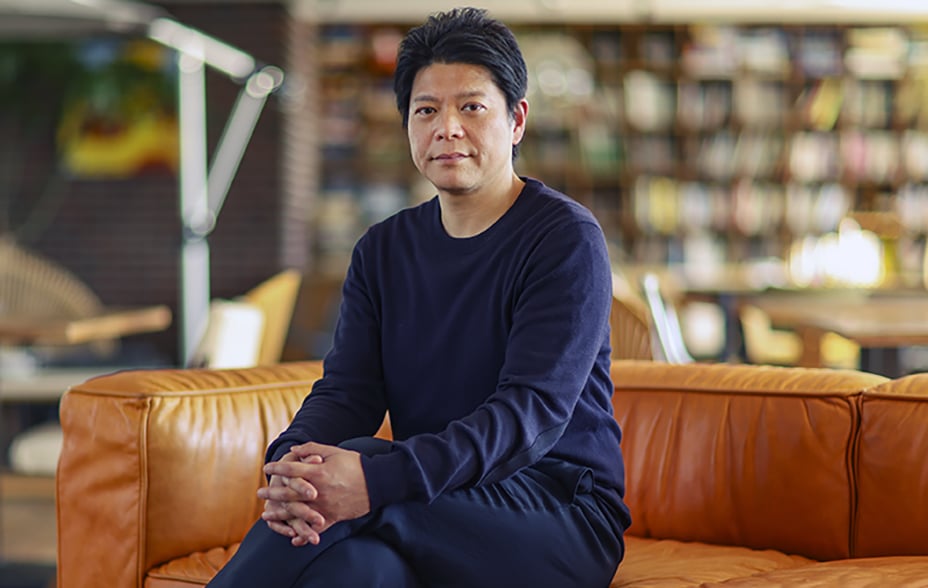
All investment strategies have the potential for profit and loss, your or your clients’ capital may be at risk. Past performance is not a guide to future returns.
In 1995, after four years as an investment analyst in Japan, I was invited to write an article entitled “Japan: why this time is different”. My task was to speculate on whether the next five years would see a rally. At the time equities had dropped by 60 per cent in yen terms, the short-term prime lending rate had fallen from 6 per cent to 0.5 per cent and inflation had hit zero for the first time in decades.
This stock market crisis was just the beginning. Despite a late 1990s surge, the Japanese market didn’t hit bottom until 2003, returning to that level in 2009 and again in 2012.
Now that the Tokyo Stock Price Index (TOPIX) is at last breaking through its 1989 high, the question has returned. Indeed, I was reminded of that 1995 piece when invited to a recent Financial Times/Nikkei panel discussion: “Revival of the Japanese stock market: is this time different?”.
Before I address that question here, it’s worth asking why the TOPIX is surging. Perhaps because Japan is currently ‘the least dirty shirt’ for investors to grab? They are cautious about the ‘magnificent seven’ tech-led companies in the US. Europe looks to be heading towards a recession. So what’s available in Asia? China’s recovery from Covid has been lacklustre and political tensions with the US remain. Which leaves… Japan.
It’s not just an absence of negatives. The country is benefiting from favourable tailwinds: a weak yen, a different perspective on inflation, high individual savings but low equity investment, and renewed government efforts to bolster inefficient balance sheets.
In response to these forces, flows into Japan have been fairly indiscriminate. In this rising tide, it’s the traditional cyclical companies – the banks, the carmakers and the heavy industrials – that are being conspicuously lifted, leading the market to new highs. The market time-horizon has also shortened and investors aren’t currently prepared to pay upfront for the expected future growth of the innovative and disruptive companies we hold. ‘Growth’ under multiple measures is heavily out of favour – a big opportunity for us.
The past three years have been as challenging for our investment philosophy as any I can remember. We continue to reflect and challenge ourselves to improve. But we should not deviate from the simple, core belief that has carried us through similarly harsh periods: in the long term, share price performance follows earnings growth.
Perception versus reality
It may surprise some to know that over the past three decades, TOPIX earnings growth has far exceeded that of the US’s S&P 500 before adjusting for inflation. In real terms, it’s more than double. Some companies have markedly outgrown the pack, a fact now obscured by the recovery buoying up old-world companies. But finding and backing the real winners has paid off for our clients. During the past 30 years, the Baillie Gifford Japanese Fund has risen almost fivefold in sterling terms.
From a bottom-up perspective, corporate Japan has been changing, under the impact of domestic and global crises, as well as a loss of competitiveness in several key industries, such as electronics or memory chips. Investors should have moved beyond the belief that investing in Japan – heavily represented as it is by cyclical and other value stocks – was simply about timing market sentiment.
This old view of Japan may take some time to shift, but here lies the opportunity for stock pickers like us. Investors miss the point that this market is not the uniform, generic opportunity it’s often presented as. It contains more entrepreneurial founder-led businesses, aligned with shareholders and focused on real long-term value, than ever before.
Over half the names in our portfolios fit that description. Our exposure to first-generation founder-owners is over four times that of the market. Academic research has been clear that founders whose interests align with the goals of their companies generate higher returns than most businesses. So, although the average revenue growth rate of the top 20 per cent of the market is no different to where it was historically, the companies driving that growth have changed markedly.
As investors, we are required not just to spot today’s competitive advantage but also the kind that will last. Can Japan’s car industry, which employs a tenth of the country’s workforce, continue to apply kaizen (continuous improvement) techniques in the transition to electric vehicles? Toyota’s electric vehicle (EV) ambitions are still anchored to the hybrid market it dominates – roughly half of the electric cars it plans to make in 2030 will still use a combustion engine. The result is that in the first quarter of 2023, China overtook Japan as the world’s largest car exporter, predominantly driven by EV sales. From a Japanese perspective, we believe the real opportunity is investing in the EV enablers: technologies that allow cars to use battery technology more efficiently. These are companies such as Murata, Nidec and ROHM, which all manufacture key components integral to EVs.

Another fragile cyclical industry is banking, where margins are low partly because of central bank policy, but also due to excess savings and liquidity. Japanese bank deposits are significantly larger than their loans, which limits their ability to set prices. Given Japan’s ageing demographic, its overbanked population and the threat of disruption from online challengers, we don’t think this rally of the traditional megabanks will last. We gain positive interest rate sensitivity through our investment in Rakuten and SBI Holdings. Both operate in the fintech sector, have substantial banking businesses and exemplify the use of the internet to disrupt sleepy incumbents.
In the past, the best that investors could hope for was the opportunity to invest in these types of short-term cyclical rebounds. Global investors pouring money into the Japanese market are not buying a long-term sustainable earnings story, they are buying a short-term uptick driven by the weaker yen.
Abundant long-term opportunities
Protected by formidable barriers to foreign competitors – idiosyncratic industry structures, ossified supply chains and a one-country language – Japan remains a good nursery for homegrown businesses.
For an illustration of Japan’s uniqueness, take the wholesale service industry. In the US there are 47,000 wholesalers. In Japan, there are 360,000. These are both an inefficiency and an effective tax on doing business. A company such as MonotaRO is a key beneficiary of the shift online. It is arguably ‘the Amazon of industrial consumables’, bringing simplicity, speed of delivery and lower cost for clients in a market, where less than 5 per cent of orders are online. MonotaRO’s sales have grown at over 20 per cent compounded over the past 10 years, virtually all of that in Japan. Over the same period, the Japanese wholesale industry has grown less than 2 per cent per annum.
Growth can often be unrecognised, as the market can’t see the catalyst that unlocks the underlying value. Dominant online infrastructure and advertising company GMO internet, for example, has grown its revenues at 12.5 per cent compounded over 10 years but trades at a significant discount to the value of its listed subsidiaries. That price appears to ignore the value implicit in operating a platform business. It became a dominant player in e-signature because it provides the ‘picks and shovels’ for increasing digitalisation and is often the first port of call for a business looking to go online.
Management matters
One cause of the market rally has been the Tokyo Stock Exchange pushing companies that trade below book value (around half the market) to shape up or ship out. This has led investors to anticipate a horde of undermanaged companies being somehow galvanised back to life, reducing cash piles and cutting cross-shareholdings.
Despite the market’s current exuberance, we are unconvinced. The reality is that a lot of Japanese companies trade below book value for good reason: they’re poorly managed. Given that top-down reform edicts are unlikely to help, we continue to focus on well-managed businesses, aligned with shareholder interests, that don’t need prodding from stock exchange directives.

Sony is a good example of an effective operator. We first bought it 10 years ago. Our initial interest was in another company, So-net Entertainment, a Sony-affiliated internet service provider. When Sony made So-net a wholly-owned subsidiary, co-CEO Kenichiro Yoshida became Sony’s deputy CFO and ultimately its CEO. Hiroki Totoki, now President and COO, worked with Yoshida at So-net and also helped establish Sony Bank. The pair are arguably the most capable management team in Japan today, having transformed a business that 10 years ago was losing money, earned half its revenue from consumer electronics and yet today makes profits of around $9bn, mainly through digital content.
We see the same potential for transformative growth driven by other gifted managers, such as Deko Idekoba at HR specialists Recruit Holdings, Susumu Fujita at digital advertisers CyberAgent and Masaru Tange at software testing company SHIFT. Japan being Japan, we also face a greater challenge in the smooth and timely passage of businesses to the next generation, something we actively engage with and invest in. Our holding Nihon M&A addresses the opportunity of over a million small and medium-sized companies facing succession issues.
Sticking to our knitting
Our investment philosophy, consistently applied over the last 30 years, aims to find the highest growth companies and hold them for the long term, not attempting to surf relatively short-term waves of liquidity and momentum. Current valuations make the opportunity set more attractive than ever, and we believe the structural growth drivers that underpin the portfolio are strengthening.
The portfolio characteristics haven’t changed. We continue to emphasise resilience as a key to success. The market may have punished ‘jam tomorrow’ thinking, but over 90 per cent of our portfolio is invested in profitable companies serving up ‘jam today’. The best investments are made in the depths of despond. We simply don’t know which of the 50-plus shares we are invested in for our clients might become the eight-to-ten-fold winners of the next decade, as Keyence or Sony have been in the last.
The hard part of disciplined, long-term investing is enduring periods when everyone thinks you’re wrong, but when the underpinnings of growth are established – albeit unrecognised. This is why I believe this time is very different.
| 2019 | 2020 | 2021 | 2022 | 2023 | |
| Baillie Gifford Japanese Fund | 1.4 | 7.9 | 12.4 | -19.3 | 0.6 |
| TOPIX |
-0.3 | 2.4 | 15.6 | -13.5 | 15.1 |
| TOPIX +1.5% (Target) | 1.2 | 3.9 | 17.4 | -12.2 | 16.9 |
| IA Japan (Sector Average) | -1.1 | 5.6 | 16.7 | -15.4 | 11.3 |
Source: Baillie Gifford & Co Limited and StatPro, FE, Tokyo Stock Exchange. Total return in sterling.
The manager believes that the TOPIX +1.5% is an appropriate target given the investment policy of the Fund and the approach taken by the manager when investing. In addition, the manager believes an appropriate performance comparison for this Fund is the Investment Association Japan Sector.
Past performance is not a guide to future returns.
Legal notice: The TOPIX Index Value and the TOPIX Marks are subject to the proprietary rights owned by Tokyo Stock Exchange, Inc. and Tokyo Stock Exchange, Inc. owns all rights and know-how relating to the TOPIX such as calculation, publication and use of the TOPIX Index Value and relating to the TOPIX Marks. No Product is in any way sponsored, endorsed or promoted by Tokyo Stock Exchange, Inc.
Risk warnings
Investments with exposure to overseas securities can be affected by changing stock market conditions and currency exchange rates. Investments with exposure to a single market and currency could increase risk.
The views expressed should not be considered as advice or a recommendation to buy, sell or hold a particular investment. They reflect opinion and should not be taken as statements of fact nor should any reliance be placed on them when making investment decisions.
This communication was produced and approved in November 2023 and has not been updated subsequently. It represents views held at the time and may not reflect current thinking.
All investment strategies have the potential for profit and loss, your or your clients’ capital may be at risk. Past performance is not a guide to future returns.
This communication contains information on investments which does not constitute independent research. Accordingly, it is not subject to the protections afforded to independent research and Baillie Gifford and its staff may have dealt in the investments concerned.
All information is sourced from Baillie Gifford & Co and is current unless otherwise stated.
Important information
Baillie Gifford & Co and Baillie Gifford & Co Limited are authorised and regulated by the Financial Conduct Authority (FCA). Baillie Gifford & Co Limited is an Authorised Corporate Director of OEICs.
Baillie Gifford Overseas Limited provides investment management and advisory services to non-UK Professional/Institutional clients only. Baillie Gifford Overseas Limited is wholly owned by Baillie Gifford & Co. Baillie Gifford & Co and Baillie Gifford Overseas Limited are authorised and regulated by the FCA in the UK.
Ref: 1858017 59745






